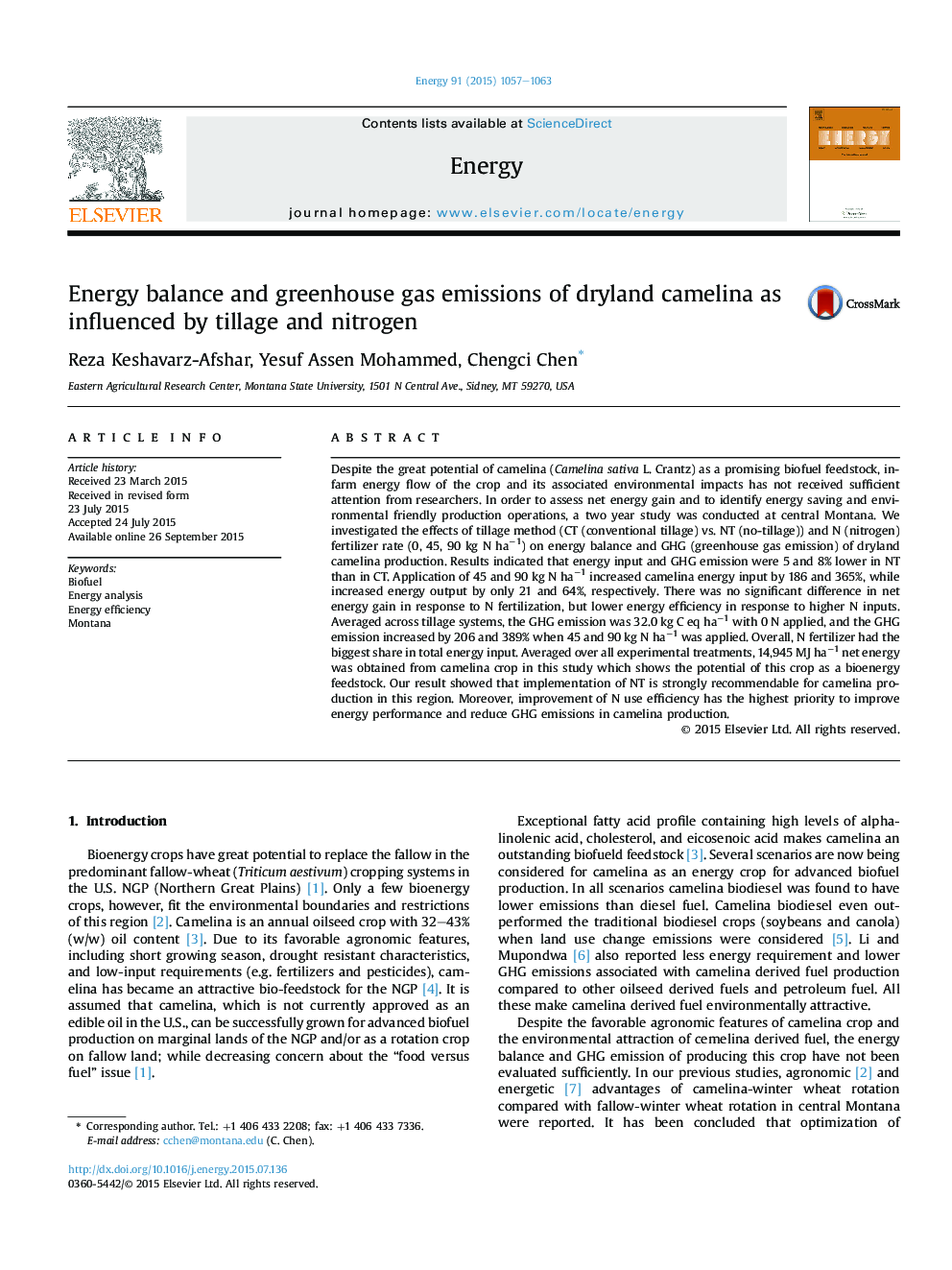| Article ID | Journal | Published Year | Pages | File Type |
|---|---|---|---|---|
| 1731558 | Energy | 2015 | 7 Pages |
•Camelina produced 14,945 MJ ha−1 of net energy in this study.•No tillage operation reduced 5% energy input and 8% greenhouse gas emission.•Nitrogen fertilizer was the most energy-intensive input in camelina production.
Despite the great potential of camelina (Camelina sativa L. Crantz) as a promising biofuel feedstock, in-farm energy flow of the crop and its associated environmental impacts has not received sufficient attention from researchers. In order to assess net energy gain and to identify energy saving and environmental friendly production operations, a two year study was conducted at central Montana. We investigated the effects of tillage method (CT (conventional tillage) vs. NT (no-tillage)) and N (nitrogen) fertilizer rate (0, 45, 90 kg N ha−1) on energy balance and GHG (greenhouse gas emission) of dryland camelina production. Results indicated that energy input and GHG emission were 5 and 8% lower in NT than in CT. Application of 45 and 90 kg N ha−1 increased camelina energy input by 186 and 365%, while increased energy output by only 21 and 64%, respectively. There was no significant difference in net energy gain in response to N fertilization, but lower energy efficiency in response to higher N inputs. Averaged across tillage systems, the GHG emission was 32.0 kg C eq ha−1 with 0 N applied, and the GHG emission increased by 206 and 389% when 45 and 90 kg N ha−1 was applied. Overall, N fertilizer had the biggest share in total energy input. Averaged over all experimental treatments, 14,945 MJ ha−1 net energy was obtained from camelina crop in this study which shows the potential of this crop as a bioenergy feedstock. Our result showed that implementation of NT is strongly recommendable for camelina production in this region. Moreover, improvement of N use efficiency has the highest priority to improve energy performance and reduce GHG emissions in camelina production.
